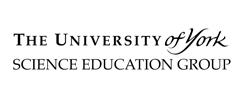- View more resources from this publisher
 University of York Science Education Group
University of York Science Education Group
TRUMP Part 1: Introduction to Astrophysics
This introductory part of the TRUMP Astrophysics package gave an overview of the current picture of the Universe. It provided some information relating to telescopes and observations, and ended with two examples of physics in astronomy:
*the use of line spectra to estimate the age of the Universe and
*the use of line spectra and Newtonian gravitation to determine stellar masses.
The astronomical terminology and the physics principles introduced were all used again in later parts of the TRUMP Package, where aspects of the scientific view of the Universe, and observational techniques, were treated in greater detail.
Contents of Teacher’s Guide
INTRODUCTION TO THE PACKAGE
Using this Package
STUDY NOTES
1 Introduction
1.1 Astronomy and astrophysics
1.2 Terminology and conventions
Summary of Section 1
2 A view of the Universe
2.1 A quick tour of the Universe
2.2 Positions, sizes and distances
Summary of Section 2
3 Observing with electromagnetic radiation
3.1 The electromagnetic spectrum
3.2 Telescopes on Earth and in space
3.3 Line spectra
Summary of Section 3
4 The Doppler effect, redshift and Hubble's law
4.1 The Doppler effect
4.2 Hubble's law
Summary of Section 4
5 Gravity and orbits
5.1 Gravitation and orbital motion
5.2 Binary stars
Summary of Section 5
Self-assessment questions
ITQ answers and comments
SAQ answers and comments
Glossary
TEACHING NOTES
Introduction
Student learning outcomes
1.1 Introduction to astronomy
1.2 Terminology and conventions
1.3 Observing the night sky
2 A view of the Universe
Student learning outcomes
2.1 Setting the scene
2.2 Measuring size and distance
2.3 Using models
3 Observing with electromagnetic radiation
Student learning outcomes
3.1 The electromagnetic spectrum
3.2 Telescopes on Earth and in space
3.3 Line spectra
4 The Doppler effect, redshift and Hubble's law
Student learning outcomes
4.1 The Doppler effect
4.2 Hubble's law
5 Gravity and orbits
Student learning outcomes
5.1 Gravitation and orbital motion
5.2 Binary stars
Resources
Books
American college texts
Other resources
Show health and safety information
Please be aware that resources have been published on the website in the form that they were originally supplied. This means that procedures reflect general practice and standards applicable at the time resources were produced and cannot be assumed to be acceptable today. Website users are fully responsible for ensuring that any activity, including practical work, which they carry out is in accordance with current regulations related to health and safety and that an appropriate risk assessment has been carried out.




